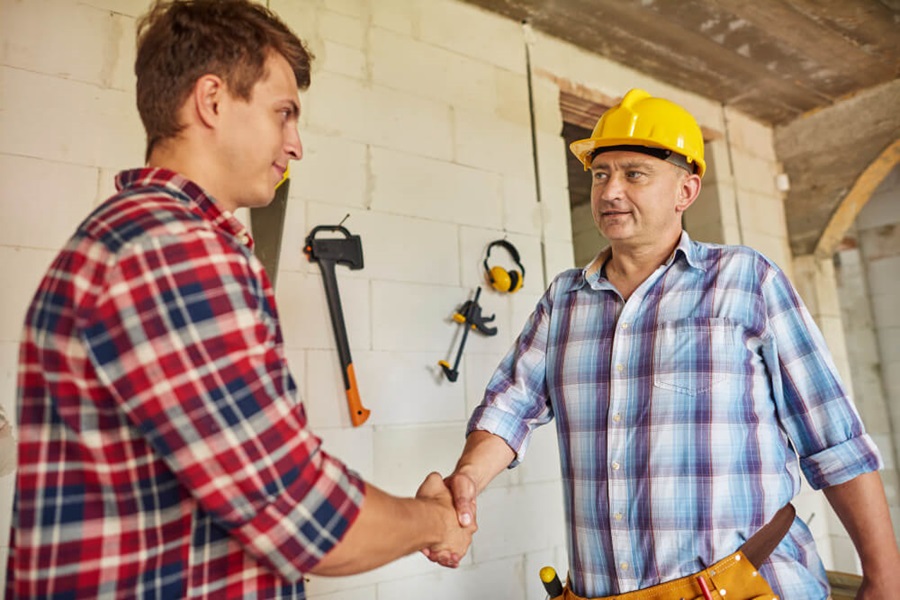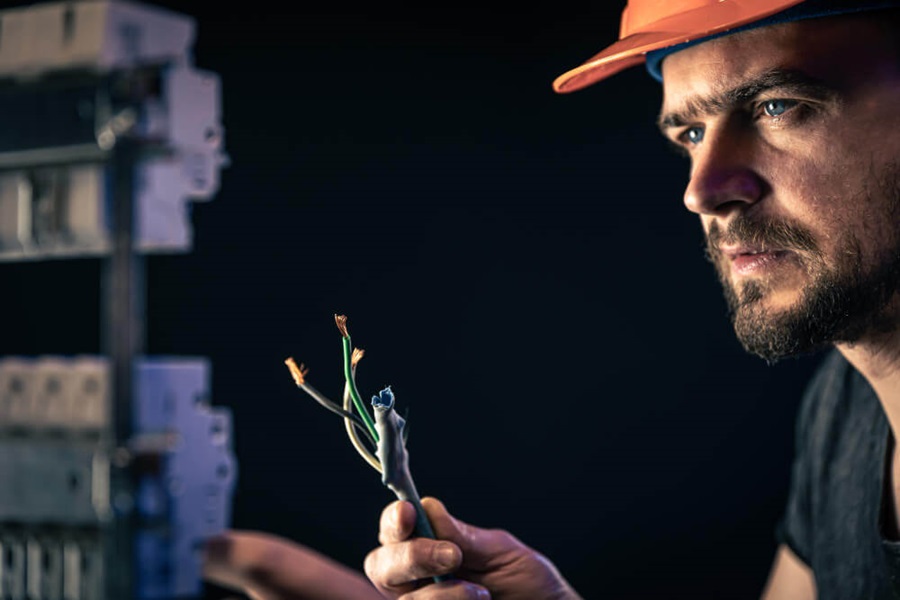
Danger? Underfloor heating?! Beware, as this article is about to crack the myths surrounding the dangers of underfloor heating.
Underfloor heating systems have transformed modern homes, offering a cosy warmth underfoot. But what about the perceived dangers? In this article, you will learn about the (potential) dangers of underfloor heating, and how homeowners can be reassured about the safety of electric UFH and water underfloor heating. By being aware of the potential risks of underfloor heating will help you to make a more informed decision about whether these heating methods are right for your home, and how you can tackle these challenges, should they arise.
Equip our plumbing parts to aid with fixing all manners of underfloor heating problems.
- Are Underfloor Heating Systems Harmful?
- Debunking Myths Of Underfloor Heating
- Potential Disadvantages of Underfloor Heating
- Retrofitting Underfloor Heating
- Are Heated Floors A Fire Hazard?
- Minimising The Dangers Of Underfloor Heating
- Can Underfloor Heating Systems Be Easily Repaired?
- Preventing Dangers Of Underfloor Heating
- FAQs
- Sources
Are Underfloor Heating Systems Harmful?
The question of whether underfloor heating systems are harmful appears frequently in discussions about modern heating solutions. What many people are unaware of is that these concerns regarding underfloor heating systems are based on outdated information, dating back to the 1960s. At that time, underfloor heating was a relatively new technology, and the systems often operated at high surface temperatures, exceeding 30°C. Such high temperatures led to the proliferation of dust mites and could aggravate existing venous diseases.
Improve the performance of your home heating with our guide on control underfloor heating from your phone.
Debunking Myths Of Underfloor Heating
To address these outdated concerns regarding the dangers of underfloor heating, you need to understand how underfloor heating has changed and improved since its development. Today’s systems are designed with better control and efficiency, significantly reducing any risks that were present in earlier models.
Potential Disadvantages of Underfloor Heating
One of the most notable disadvantages of traditional underfloor heating systems is its slow response time. This is because the heating pipes are embedded 5-10 cm beneath the surface, and the heat must travel through the screed before warming the room. It can take 6-7 hours to achieve the desired temperature. This slow response necessitates maintaining a constant temperature, even on days when the room is not in use, impacting energy costs.
Solution: A practical approach is to expand the heating surface to include walls and ceilings. This reduces the required temperature and speeds up the warming process. This is important to know for those who want to integrate wall heaters and pipe distances with underfloor heating.
Professional Tip: Maintain a constant underfloor heating temperature around 23°C, akin to the temperature of the soles of your feet. Wall heating, being more responsive due to less coverage and radiation-based operation, can be adjusted according to comfort.
For more information regarding screed, check out this guide on how long does screed take to dry?
Retrofitting Underfloor Heating

In new buildings (new builds), the installation costs of underfloor heating systems are comparable to that of other heating options. However, retrofitting may involve raising the floor or milling channels into it, which can be expensive.
Solution: Consider surface heating as an alternative in renovations. This can be installed not just on the floor but also on walls and ceilings, offering a cost-effective solution.
Professional Tip: Maintaining a consistent temperature across your underfloor heating system is paramount to its performance. The responsive nature of wall heating allows for adjustments based on the homeowner’s comfort.
Do not overstress yourself! Follow our guide on checking underfloor heating pressure.
Circulation And Vein Problems
Proper temperature regulation is critical in preventing health issues related to underfloor heating. The slow response time of some systems may tempt users to set excessively high temperatures, leading to the ‘warm-cold-cold’ effect due to uneven heating. This can strain circulation and exacerbate existing heating conditions.
- Solution: Choose an underfloor heating system with balanced surface temperature and closely spaced pipes to minimise temperature fluctuations.
- Professional Tip: Systems with parallel flow help to reduce temperature loss along the pipe length, ensuring a more even surface temperature.
Are Heated Floors A Fire Hazard?
The safety of electric underfloor heating systems is a common concern among homeowners. These systems, which have seen a surge in popularity due to them being easier to install compared to hydronic underfloor heating, as well as a safer operation, utilise a thin wire mesh installed beneath the floor. This mesh is powered by the home’s main electric supply, heating up and evenly distributing warmth throughout the room, eliminating hot or cold spots.
Provided they are correctly installed and the installation guidelines are followed, electric underfloor heating systems pose minimal fire risk. They are regarded as one of the safest methods of home heating.
Hydronic underfloor heating, or water-based systems, offer an alternative, particularly in new constructions. Despite being more challenging to install in existing buildings due to the associated costs, they are favoured in new homes for their lower operational costs compared to electric systems.
These systems function through thermodynamic heat transfer, circulating hot water through pex pipes under the floor. The pipes are insulated to maximise heat transfer to the surface, creating a warm and cosy ambiance without the noise or dryness commonly associated with radiators.
Moreover, as they do not require water at boiling temperatures, hydronic systems present an even lower fire risk than traditional radiator heaters. Therefore, if you want to add wet underfloor heating to a home, it is better to do this whilst the new build is still undergoing construction.
Adhesive is an effective tool for securing your underfloor heating and flooring. Learn about the best adhesive for underfloor heating now.
Minimising The Dangers Of Underfloor Heating
Faults usually occur after the installation process, and this may depend on if a piece of wiring or piping hasn’t been fitted correctly. It’s vital to follow the manual closely and test the system thoroughly before covering it with flooring. If damage occurs during installation, particularly in electric systems, repair kits available for around £20 can offer a solution, depending on the damage’s extent.
Hiring a professional installer is undeniably the better option to install your heating system to prevent any dangers of underfloor heating from occurring. Professionals will ensure proper installation and accountability for any issues that arise. A professional installer will also provide guidance on using the system efficiently. Feel free to contact us today to see how best we can help with your installation.
Can Underfloor Heating Systems Be Easily Repaired?

Concerns about the dangers of underfloor heating systems often revolve around the potential for faults or the need for repairs over time. However, these systems are more likely to incur damage during installation rather than during regular use. Electric underfloor heating systems, in particular, are robust, safely enclosed within insulation, screed, and flooring, and seldom fail under normal conditions.
Should a fault arise, it’s essential to contact a specialist engineer for repairs. Our experts can precisely locate faults under a finished floor, allowing for targeted repairs without the need to disrupt the entire floor. For hydronic systems, faults can be detected using thermal cameras or moisture testers, facilitating efficient troubleshooting.
Preventing Dangers Of Underfloor Heating
In conclusion, modern electric and hydronic underfloor heating systems, when properly installed and maintained, will eradicate outdated potential concerns about the dangers of underfloor heating with their safe, efficient, and comfortable heating capabilities. They offer minimal fire risks and are easy to maintain and repair, providing a cosy and reliable warmth that will improve the building that they are added to. By selecting the right system and adhering to proper temperature settings, underfloor heating is a safe, efficient, and highly beneficial choice for modern homes.
To further prevent concerns or dangers of underfloor heating, observe this guide on house layout mistakes which may cause your underfloor heating to work incorrectly.
FAQs
What is the downside of underfloor heating?
The main downside of underfloor heating is the initial installation cost, which can be higher than traditional heating systems like radiators. Repairing the system, if needed, can also be more complex and costly.
Is underfloor heating bad for your health?
Underfloor heating is generally not bad for your health. However, excessively high temperatures or poor maintenance can potentially lead to discomfort, but it’s not a common health risk when properly installed and maintained.
What is the problem with underfloor heating?
Common problems with underfloor heating include uneven heating, higher installation costs, potential damage during installation or repairs, and the need for a compatible flooring type that conducts heat effectively.
Is underfloor heating a fire risk?
Underfloor heating is not inherently a fire risk if installed correctly and maintained properly. Use of appropriate materials, regular inspections, and following safety guidelines can help prevent fire hazards.
Sources
Stacey, Z., (2023) 9 whole house layout mistakes – avoid these common floor plan flaws. Homes and Gardens. [online] Available at: https://www.homesandgardens.com/interior-design/whole-house-layout-mistakes [accessed 12/12/23]
